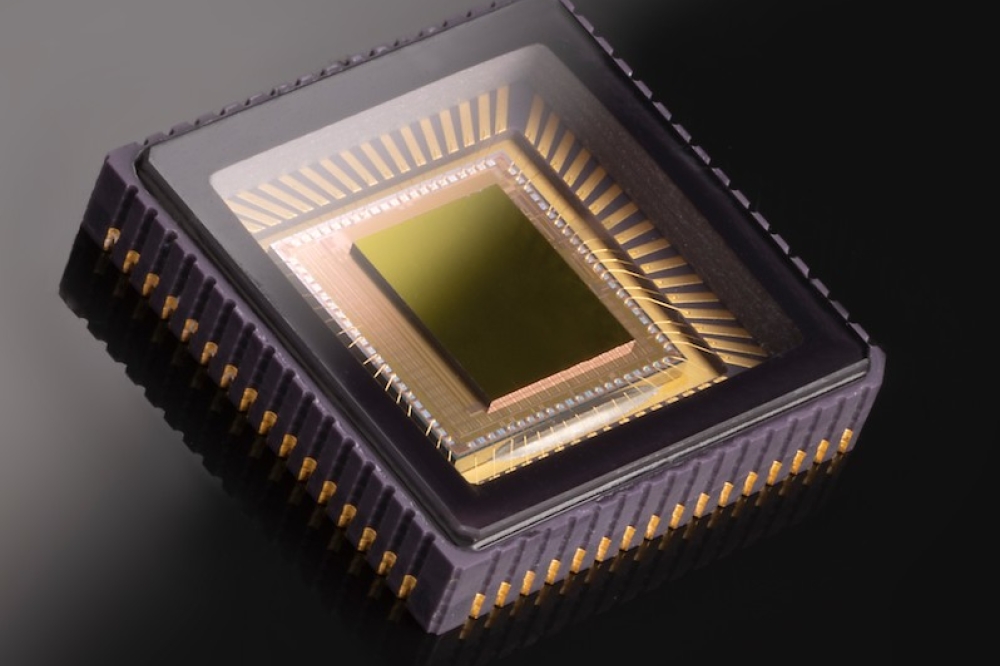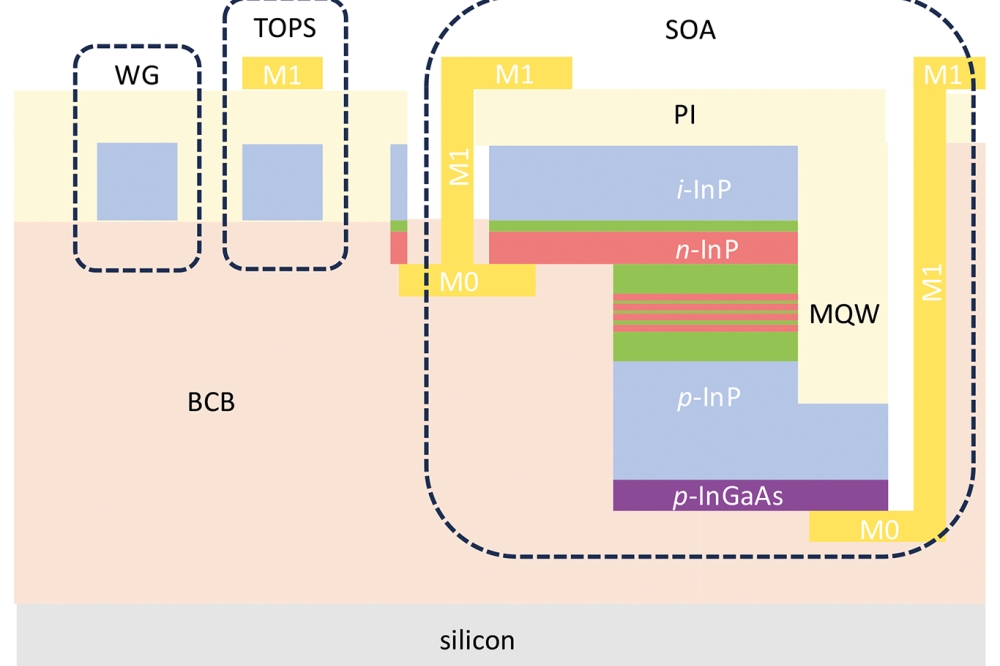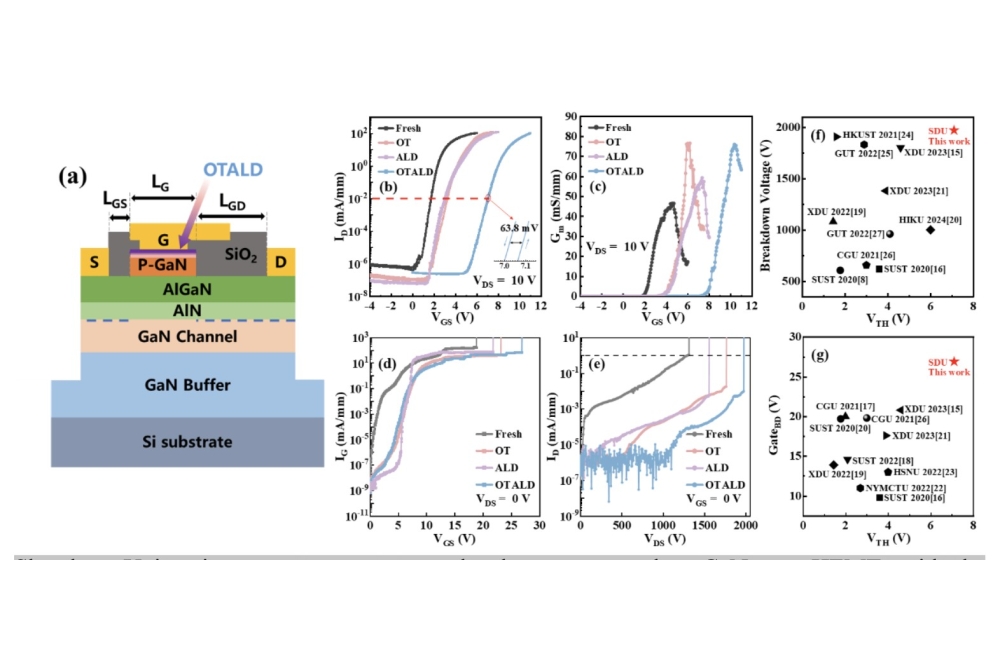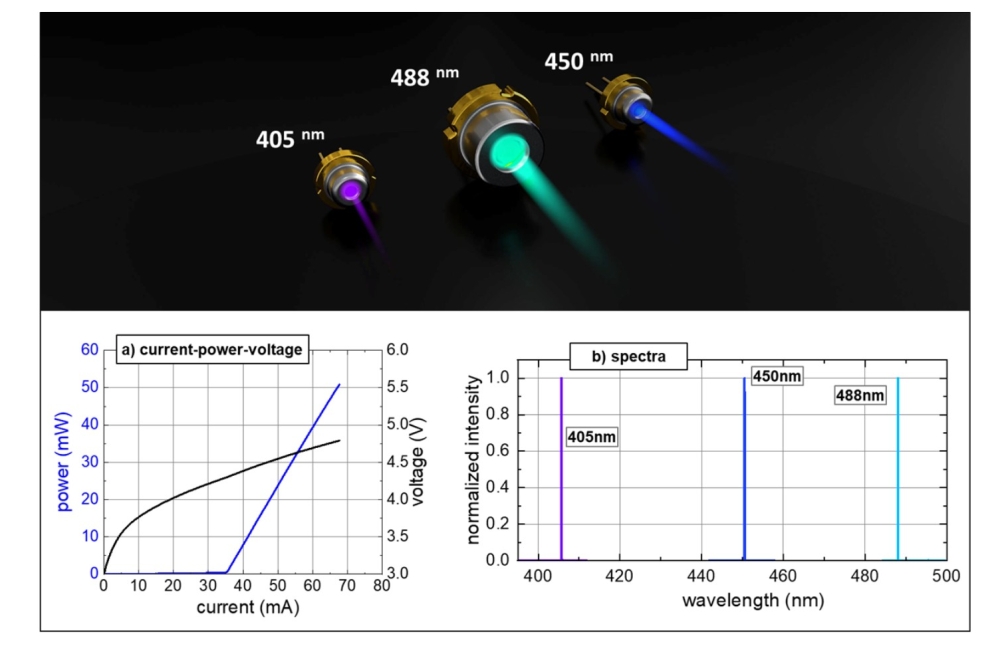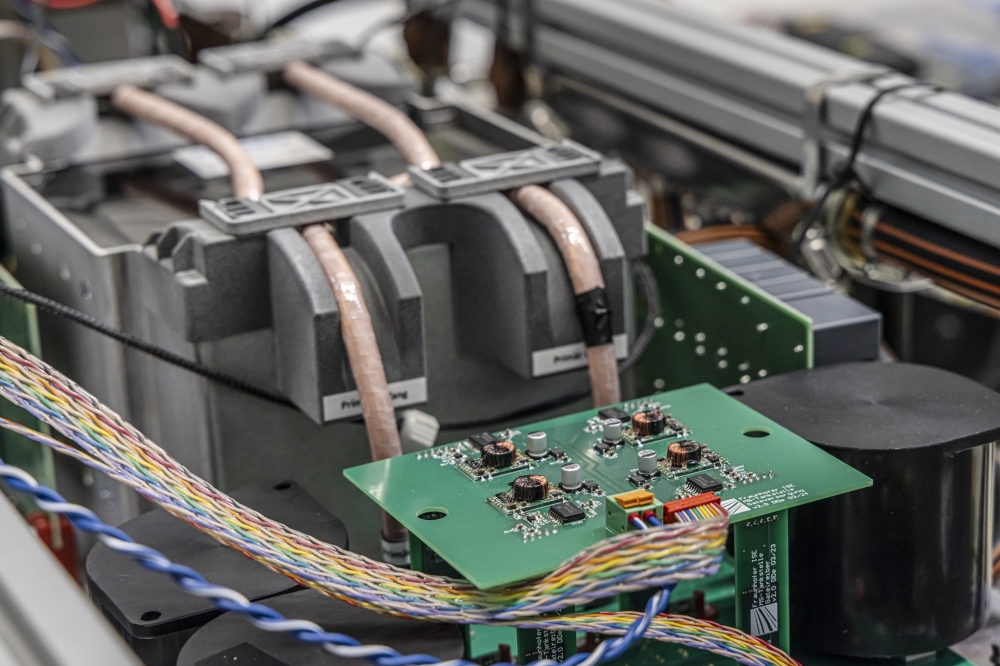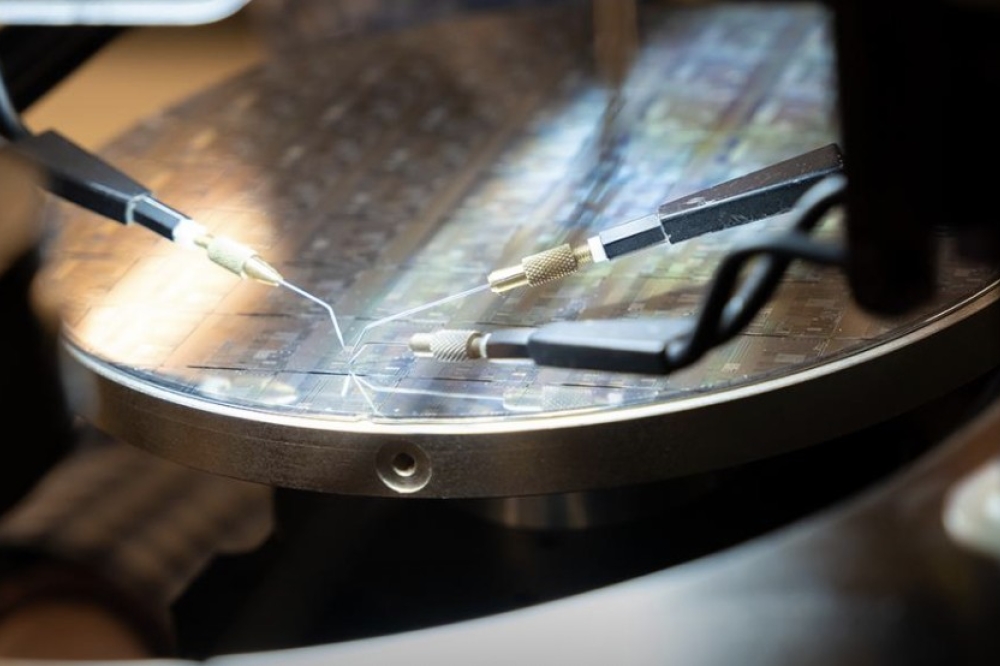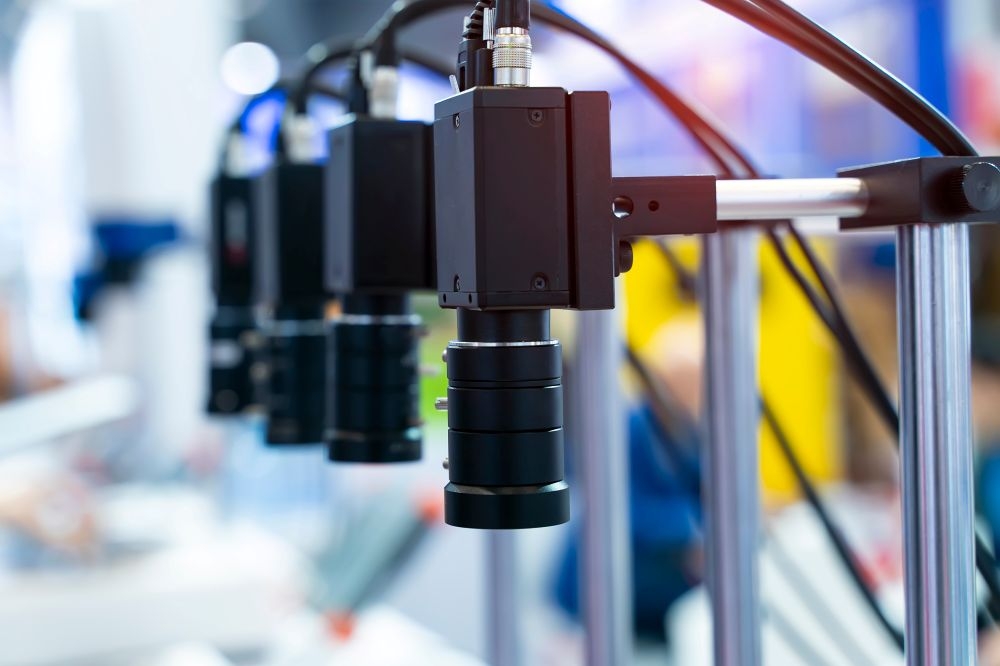Moving in the right direction
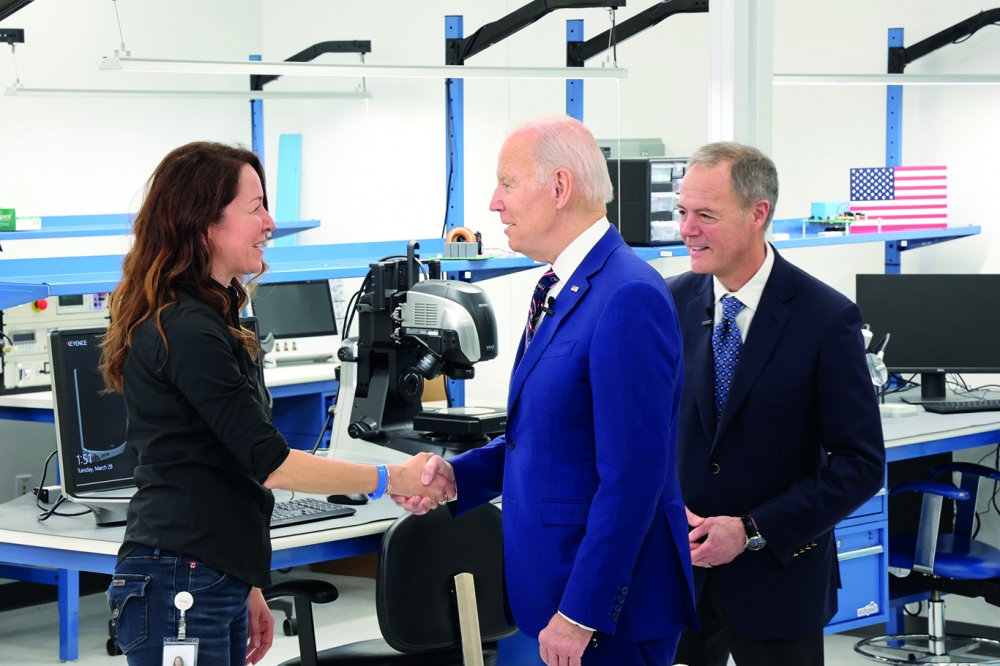
With a handful of women now in high-profile leadership positions within
our industry, the extreme level of male dominance at the very top is
starting to fade away.
BY RICHARD STEVENSON, EDITOR, CS MAGAZINE
One of the weaknesses within the compound semiconductor industry is that it is so male dominated, particularly at the board level. But at least there are signs it is starting to move in the right direction, with more women than ever now holding key leadership positions.
Here we tell the fascinating stories of four of those leaders. With such a small sample size, drawing any significant conclusions is fraught with danger. However, what is clear from all these first-hand accounts is that there’s not a single formula behind success. The foundation for rising to the top can be an advanced degree or an apprenticeship; leadership progression can come from working up through an organisation or launching a company; and while some may move continents to further their career, others may never leave the region where they grew up.
Crystal clear objectives
One of the most high-profile women within our industry, Wolfspeed’s CTO Elif Balkas, has always had a strong interest in crystalline materials, the foundation for the production of all our devices. She grew up surrounded by them – not that surprising, given that her father is a geologist – and after gaining undergraduate and masters degrees in materials science and engineering in Turkey, she headed overseas, enrolling in a PhD programme at NC State University.
“My project was on gallium nitride bulk crystal growth,” says Balkas. However, during her doctoral studies, she also devoted a lot of effort to studying the material at the heart of Wolfspeed, SiC, in the hope that previous breakthroughs in its development could be applied to GaN.
Like the key conclusions from many PhDs, while Balkas’ findings were important, they were not revolutionary. “Our conclusion was that the PVT method is not the most suitable for gallium nitride.” Colleagues working in the lab that also pursued GaN crystal growth enjoyed more success with high-temperature chemical transport methods and approaches that combine high pressures with high temperatures. However, even those superior alternatives suffered from really slow growth rates that plague the formation of bulk GaN.
Undeterred by the tremendous challenges associated wide bandgap crystal growth, Balkas looked for opportunities to continue to work in this branch of materials science after her PhD. She loved this topic in its own right, and she also valued the now-fulfilled promise that it had a role to play in trimming energy consumption and aiding the environment.
Balkas considered whether she should continue to investigate crystal growth in academia. But as she mulled this over, she realised that was not the path for her, because the pace of progress is too slow. While she has tremendous respect for the advances made by academics, her preference is to work in an environment where results are faster, along with their impact on society.
She had no doubts that her move to industry would keep her in the US, arguing: “This is where innovation happens.” One option would have been to stay local and work for Wolfspeed, but this did not fit with Balkas’ desire to see more of the US. This led her to consider several opportunities on the West Coast. However, in the end she headed in the opposite direction, deciding to go and work for Intrinsic Semiconductor, a small start-up in Washington DC that’s best known for its development of SiC substrates. She joined the company at the start of 2005. Part of the attraction of that move was the chance to work with what she describes as a brilliant group of people, who she knew through reading their papers and hearing them speak at conferences.
Balkas loved her time at Intrinsic, revelling in the great pace of advance made by the company. She also appreciated the hands-on nature of her role, common for staff working at fledgling firms.
Initially, Balkas focused on the epitaxy of GaN on SiC, developing HEMT heterostructures for RF devices. However, through interactions with other researchers developing SiC epi-processes for power devices, she also started to make contributions to that endeavour.
Wolfspeed, in its former guise as Cree, admired the success of Intrinsic, and by the summer of 2006 it had negotiated the acquisition of the start-up. This led Balkas to move to North Carolina, initially working in epitaxy, before moving to crystal growth. Here she played her part in magnifying crystal dimensions, so substrate diameters could increase from 100 mm to 150 mm and then 200 mm.
Over the years, Balkas has sought and received more responsibility. Her interest in management can be traced back to her undergraduate days, where she took courses on this, and continued as she refined her knowledge with technical leadership seminars at Cree.
Balkas has the right mindset to lead a company, because she ponders on the crucial questions that determine its success. She is keen to work out how to turn great ideas and innovation into a technology with impact, and gives much consideration to what’s needed to build successful teams and organisations.
During her climb up the career ladder, Balkas briefly moved out of R&D, spending two years within the manufacturing team. “That was actually a very good experience for me, because it gave me the experience to see things from both sides.”
Subsequent promotions led Balkas to Director and ultimately VP of Research and Development, Materials, positions that led her to report directly to the late John Palmour, the CTO of the time. Palmour, who Balkas describes as a natural leader, gave her a great deal of freedom, while ensuring that any small mistakes that she might make would never snowball out of control. “The trust and the relationship was wonderful for me.”
Balkas really appreciated the chance to draw on Palmour’s amazing breath of knowledge. While he came from a materials background, he had device-related experience accumulated over 30 years.
Late last year Palmour passed away, five years after being diagnosed with lymphoma. During the latter stages of his illness he started to slow down and help prepare Balkas to take over. However, his death came far faster than anyone expected, leading to a tricky transition for the new CTO, who started that role in January.
Balkas knows that Palmour’s shoes are too big for any individual to fill: “I was upfront that there’s no way one person can replace JP. It’s just not possible”. So rather than trying and failing to do just that, Balkas has turned to teamwork. “Everybody is actually doing a little bit of what he used to do. It’s like we diffuse all of his strengths in multiple people.”
Heather Splawn is CEO of the HVPE specialist Kyma Technologies.
Growing within Kyma
Another leader with a strong background in crystal growth is Kyma’s current CEO, Heather Splawn. When you look back at her formative years you’ll find no clue whatsoever that she would go on to play a leading role with our industry. When she started attending the University of South Carolina, she had very, very different plans in mind.
“I went to college for exercise science,” says Spawn. “I was going to be an athletic trainer.” However, she started considering alternative courses after discovering that she would have to carry out an autopsy of a cadaver to complete the degree.
Splawn’s switch to computer science made a lot of sense: she had grown up with a computer at home; her father had a job as a programmer, working for a bank; and during high school, she had taken a C++ programming course, as well two years of physics and advanced maths. With this background, she didn’t find herself behind her peers after making the transition.
During her time at the University of South Carolina, Splawn found out about fellowships worth $2000, to fund three-month summer placements in research groups. “I can live for three months on $2000,” reasoned Splawn, who went to work for Professor Duncan Buell in her long vacations. “Along the way, I switched into computer engineering, because I was a more interested in how the whole system goes together as opposed to just programming languages.”
Initially, Splawn’s plan had been to enter the world of work after graduation. Buell, however, introduced her to the possibility of enrolling in a PhD programme. That had tremendous appeal, with Splawn moving to Duke University in 2004 on a National Science Foundation scholarship that provided funds to allow her to spend several months weighing up exactly what to pursue, as initially she did not need sponsorship from a professor. After evaluating her options, she joined Professor Martin Brooke’s group focusing on mixed-signal circuit design, where she developed a sensor on a CMOS chip for her dissertation.
While some PhD students are so engrossed in their research that they would only ever leave the lab to go to the library, Splawn had a far more balanced outlook, exploring wider opportunities that highlight her capability to multi-task and embark on different challenges. One such endeavour, taken on with friends, involved organising a charity race that they christened The Doughman: a relay involving biking, running, swimming, along with plenty of eating to promote local produce. This quadrathlon gained notoriety, even appearing in an episode of the hit TV show Man v. Food.
Splawn also grabbed opportunities associated with Duke’s Master of Engineering Management programme. “I was not a formal member, but I went to a few of their open lectures and networking events. That’s where I met Keith Evans, who was CEO of Kyma.”
When she finished her PhD, Splawn knew that now was the time to head out into industry. And after considering opportunities at several companies, she decided to take up the role of Director of Business Development at Kyma Technologies. It’s a diverse position that she thrived in, getting to see first-hand how the business operated, and how negotiations would pan out between the company, its customers and its partners.
Working for a smaller company always offers opportunities that don’t exist in larger firms, with those that are keen to take on new challenges getting the chance to do so. While trying to secure a government contract, Kyma had issues with its accounting system. Splawn jumped in, driven by a belief that with some support and what she’d picked up in an accounting class taken in school, she could fix this problem.
This highly desirable can-do attitude has served her well during her rise through the ranks at Kyma. When the company needed more day-to-day planning, they created a COO role that she’s fulfilled, and in 2019 she succeeded Evans as CEO.
Under Splawn’s leadership, Kyma is directing more efforts at thick epitaxy of GaN and Ga2O3, which it is growing via HVPE. This growth technology is well suited for realising high crystal quality, low impurities, and for the growth of very thick layers. “We’re not the only ones to do this, but we have some advantages that others don’t.” She believes that Kyma’s HVPE technology produces GaN and Ga2O3 materials that are among the highest quality in the world.
Rae Hyndman, Managing Director of Clas-SiC wafer fab, beside the founder of the company Carl Johnson, who co-founded II-VI.
Switching semiconductors
While Splawn’s involvement in the semiconductor industry is hard to foresee from her formative years, the same cannot be said for Rae Hyndman, Managing Director of Clas-SiC Wafer Fab: she has the semiconductor industry in her blood. Hyndman grew up in a part of Scotland known as ‘Silicon Glen’, which has been home to several influential semiconductor companies. Hyndman’s mother loved her job at one of them, Hughes Electronics, and would very occasionally take her daughter with her to the facility when working overtime at the weekend.
This early interaction with the semiconductor industry could well have influenced Hyndman’s decision on what to do after leaving school. Good at maths and science, she could have gone off to university. But instead she took an apprenticeship at Hughes Microelectronics Ltd. In the first year of her apprenticeship she attended engineering training school, learning engineering in a male-dominated environment described as both tough and character building. Out of 200 apprentices aged between 17 and 19, just three were women.
Hyndman has no regrets in taking this pathway, and is very grateful to Hughes for the tremendous level of investment it dedicated to its engineers, in both time and money. “It was one of these old-fashioned companies that believed in families and communities.”
The Hughes apprenticeship gave Hyndman a very broad background in engineering. As well as studying its cleaner forms, such as electronics, she learnt about mechanical engineering.
After completing her apprenticeship, she first worked in process engineering, helping to churn out chips for the automotive industry. From there she began a steady succession of promotions within the semiconductor industry that’s given her increasing levels of responsibility. Yet, despite this success, there’s no evidence that she ever had a burning ambition to lead a company or gain elevated status. What’s behind her rise is a steady progression, moving from one rung of the ladder to the next, with a belief that if she got the chance to be in her boss’ shoes, she might do a better job. There’s also another ingredient, that internal battle: just what might I achieve, if I give it my best shot?
During her time at Hughes, Hyndman initially switched from process engineering to management roles within this division, such as operations. From there, she had a brief spell in production management.
“It wasn’t a choice,” recollects Hyndman. “I had a tough boss who believed I needed some experience in production management.” Fortunately, in hindsight, being forced to take this position for a year had a tremendous upside. “Engineers think in a certain way, but once you get a spell in production, you realise the impact engineering can have on production.”
Hyndman’s breadth of expertise continued to blossom with a two-year programme in six-sigma at Raytheon Systems Ltd, where she gained a qualification equivalent to a black belt. She values this experience, which she sees as valuable for high-level problem solving.
Within everyone’s career, some events are beyond their control, having ramifications that will take them down a new path. For Hyndman, a major event, which subsequently led to her switch from the silicon industry to that of SiC, came in 1997, when US defence giant Raytheon bought Hughes. Initially this had minimal impact, and while the semiconductor department may have been out on a limb from much of Raytheon’s activity, its tremendous success ensured its continuation. But as time went on, customers started to moved their orders away from this 100 mm fab, switching to partners with 150 mm and 200 mm lines. Survival required a radical move, realised by shifting to work on SiC, initially using 2-inch substrates of dubious quality. “Before many people had heard of silicon carbide, we reckoned it had a bright future,” recollects Hyndman.
During her time at Raytheon, Hyndman enhanced her knowledge and continued to grow, supported for some of that time by a female engineer boss. “She really believed in me more than I ever did myself. That’s been hugely important and influential for me.”
Another key figure in Hyndman’s career is Carl Johnson, founder and former CEO of II-VI. When Raytheon decided to ditch its wafer fab in 2017, the decision alarmed and mystified Johnson, whose company drew on the services of this Scottish fab. Johnson had no doubt in the great potential in SiC, and had an emphatic belief that the knowledge and experience of Hyndman and her colleagues had to be put to good use.
To make this happen, the US entrepreneur raced over to the UK to meet key personnel at Raytheon and set out his vision for the development of a new SiC fab. This led him to found Clas-SiC, appointing Hyndman as Director and Operations Manager.
Working with a core foundational team from the closed Raytheon Systems Wafer Fab, Hyndman took on the task of building a brand new 150 mm SiC wafer fab, which had to be located within half an hour of the Raytheon site, to enable the hiring of as many former colleagues as possible. The majority of the 24-strong start-up were engineers, but the team also featured those with managerial skills and expertise in running a facility.
As Clas-SiC took off, Hyndman got her first ever experience of building a wafer fab. “It hugely developed me as a person, and made me confident that with the right team around me that I could pretty much tackle anything.”
Two years into the build, Hyndman’s co-director retired. For many of us, such a loss leaves us feeling exposed. But countering any fears that Hyndman may have had was the tremendous support of Johnson, who has huge faith in her.
Johnson told Hyndman that he wanted her to be the Managing Director of Clas-SiC. She wasn’t so sure, having concerns about her lack of experience in running a business. But Johnson insisted, Hyndman relented, and now she’s delighted to have taken the role. “It feels like all things have led to where I am today,” reasons Hyndman. “Business is booming – it’s fantastic.”
While the skills needed to run a business differ from those working as an engineer in the semiconductor industry, Hyndman is sure that she benefits from her background. “It’s really important that you understand the constraints on the business from the manufacturing side.”
In her latest role, she has learnt how to deal with the risks associated with running a company. “You have to be comfortable with not always knowing, and being confident that you can work it out. It’s a really undervalued craft.”
Ann Hughes is the founder and Managing Director of the metal-organic provider Pegasus.
Pegasus premier
Another woman at the top of a UK company operating within the compound semiconductor industry is Ann Hughes, Managing Director of Pegasus, a supplier of metal-organic materials.
Like Hyndman, Hughes did not begin her career in our industry. Instead, she initially worked for a small speciality gas supplier Electrochem Ltd., first in an internal sales role, before expanding responsibilities to encompass marketing and external sales activities.
Hughes gained a great deal from working for this company, which had a clear vision, good ethics, and an entrepreneurial spirit. “It was an ideal learning platform for business, and understanding problem solving.”
Global multinational chemical company Linde snapped up the small speciality gas supplier in the mid 1990s. That led Hughes to work for Linde for a while, managing the supply of electronic gases within the UK, before she sought a new challenge, moving to Epichem, shortly after the turn of the millennium.
In this new role, as well as taking responsibility for the supply of electronic gases within the UK, she started to support the metal-organic side of the business. “That was the first time I was working specifically on metal organic supply into the semiconductor industry.”
Again, the company Hughes worked for got bought out by a multi-national, this time Sigma Aldrich. It’s a move that aided her career, as she now manged the metal-organics business on a global scale. But she also got to see the downsides of working for a large public company. “There are sometimes significant challenges to working in a corporation where the customers and people are not necessarily the key drivers”.
From Hughes’ perspective, another downside of the Sigma Aldrich acquisition – in this case having implications for her colleagues – was the plan to streamline global metal-organic production, including the shutting of the UK site.
For those facing such a threat, a common response is to feel downtrodden and unappreciated. After all, how can those making these top-level decisions fail to grasp the exceptional level of expertise of those work at this crucial facility?
But rather than simply bemoaning this unfortunate state-of-affairs, Hughes decided to act. Driven by optimism and positivity, she decided to launch a new supplier of metal-organics, Pegasus, keeping the local team intact. Buoyed on by the exceptional capability of her co-workers, she reasoned that the new venture had a very good chance of success. “The key is having the right team,” says Hughes. “You’ve got to have all the pieces of the jigsaw together.”
Getting any new company off the ground is never a cake walk, given in particular the need to raise funds – but that’s not been one of the biggest challenges that Pegasus has faced since it started trading in 2015. What’s been far harder has been overcoming the obstacles caused by Brexit. The UK’s decision of leave the EU wrought havoc in the shipping of goods, with hazardous materials, such as metal-organics, facing a particularly high level of disruption.
“We overcame that challenge by creating Pegasus Chemicals Europe,” explains Hughes. “We had to create a base within Europe where we have sales and distribution.”
Another headwind has come from the war in Ukraine. Key ingredients in metal-organic precursors are rare-earth materials, mined from the ground in large land masses. “One of those large land masses is Russia, resulting in a gap in supply chains, so we are expanding and strengthening our manufacturing platform,” says Hughes.
To address this issue, stemming from global geopolitics, Pegasus is devoting a great deal of effort to strengthen supply chains. While there’s a focus on the UK in this regard, the compound semiconductor industry at large is also high on the company’s list of priorities.
While Hughes will be leading and directing efforts to tackle these challenges, she sees her role as far more than just a problem solver and decision maker.
As Managing Director, she’s also in a position to ensure that the company rewards its staff for their dedication, installs a good culture and work ethic, and is a fun place to be. “Ensuring a safe, focused and enjoyable place to work is as significant as progressing the continued growth of the business”.
Maintaining momentum
All four leaders who have told us their stories are united in believing that our industry is a great place to work, and one where it’s important to try and chip away at the under-representation of women. Their efforts in this direction vary, but they are all contributing – they are in leading roles that have a high profile, they are willing to talk to the media, and they are inspiring others to follow in their footsteps.
At Clas-SiC there is circumstantial evidence that having a woman at the helm is making a difference. While there is no gender bias in the selection of employees, of the four modern apprentices at the company, two are female. Efforts that can be directed at recruiting, nurturing and elevating women within any company will depend on its size. In terms of headcount, Wolfspeed dwarfs Kyma, Clas-SiC and Pegasus, and can adopt a different approach to them.
When Wolfspeed appointed Gregg Lowe as CEO in 2017, once of his first initiatives involved creating a number of employee resource groups, including one for women.
“I jumped on this because it was very exciting to me,” remarks Balkas. Working with three colleagues, she founded the Women’s Initiative at Wolfspeed. Today it has over 800 members.
One of the objectives for them is to increase the level of diversity, in terms of recruitment, to 50 percent. But as well as recruiting women, steps are taken to retain them.
A tricky time for many women is when they have young children. At a time when many will consider quitting their job, the Women’s Initiative offers support, encouraging them to persevere with their career. Often, after a few months, difficulties around that work life balance can be resolved. “Then it’s a win win, for both the individuals and more so the company.”
Attracting women to our industry, retaining them and helping them to thrive is clearly an important goal for all of us. While the compound semiconductor industry has such a bright future ahead, in order to ensure the greatest success, everyone that’s keen, committed and capable will need to be given the chance to play their part to the fullest.
Main image: Elif Balkas, CTO of Wolfspeed, welcoming US President Joe Bidden to the Durham, NC headquarters in late March. Wolfspeed was first stop on an ‘Invest in America’ tour.























